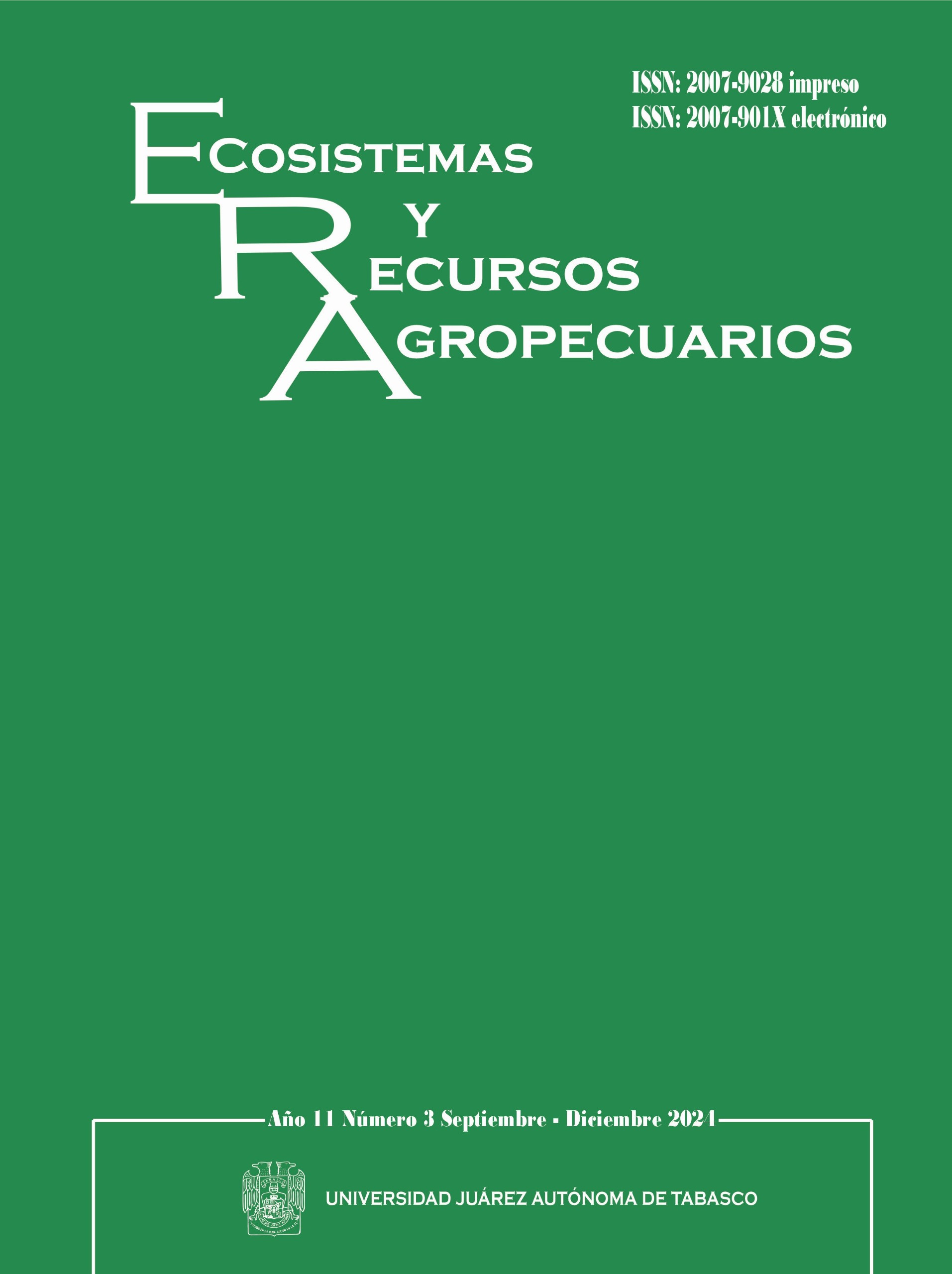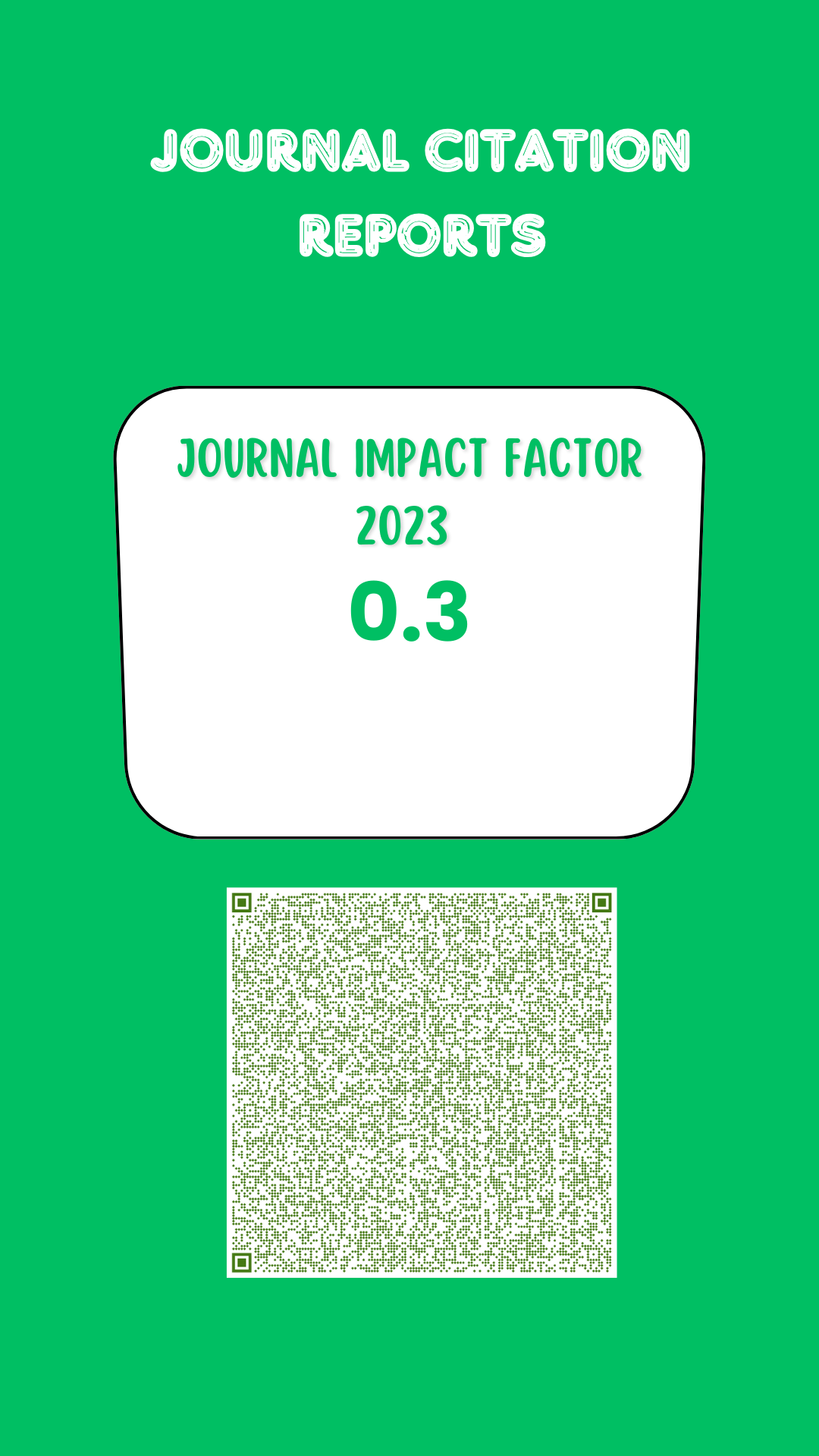Organic fertilization in nopalitos in the central area of Tamaulipas, Mexico
DOI:
https://doi.org/10.19136/era.a11n3.3972Keywords:
self-consumption, sheep manure, orchard, earthworm humus, Opuntia ficus-indicaAbstract
The production of nopalito, Opuntia ficus-indica (L.) MILL., was analyzed using two varieties, Villanueva (V) and Copena-V1 (C); two densities, 10 plants m2 (D10) and 20 plants m2 (D20); and two organic fertilizers, worm humus (H) and sheep manure (O). The experimental design consisted of a 2*2*3 factorial arrangement (two varieties, two planting densities and three types of fertilization) in three random blocks, with four treatments, three replicates each, 36 experimental units, considering control units without fertilizer (T). The O/V/D20 treatment produced the largest number of nopalitos, 508; the H/V/D10 treatment had the lowest production, 110 nopalitos. The treatment with the highest production in fresh weight was O/C/D10, 60.6 t ha-1. The H/C/D20 treatment had the lowest yield with 30 t ha-1. The MANOVA test showed significant differences (p<0.05) in the interactions fertilizer*variety, density*variety, fertilizer*temperature and density*temperature. The O fertilizer had the greatest impact on production.
Downloads
References
Alcántara-Nieves N, Larroa-Torres RM (2022) La multifuncionalidad de los huertos urbanos en la Ciudad de México. Espiral (Guadalajara) 29(83): 187-229. DOI: https://doi.org/10.32870/eees.v29i83.7235.
Almaguer-Sierra P, Rodríguez-Fuentes H, Barrientos-Lozano L, Mora-Ravelo SG, Vidales-Contreras JA (2014) Relación entre grados-días y la producción de Opuntia ficus-indica para el consumo humano en Marín, Nuevo León. Revista Mexicana de Ciencias Agrícolas 5(6): 1055-1065. DOI: https://doi.org/10.29312/remexca.v5i6.889.
Anaya-Pérez MA (2001) History of the use of Opuntia as forage in México. In: Mondragón-Jacobo C, Pérez-González S (ed). Cactus (Opuntia spp.) as storage. FAO International Technical Cooperation Network on Cactus Pear. Rome, Italy. pp: 5-12. https://www.fao.org/3/Y2808E/y2808e05.htm. Fecha de consulta 15 mayo de 2023.
Galicia-Villanueva S, Escamilla-García PE, Alvarado-Raya H, Aquino-González LV, Serna-Álvarez H, Hernández-Cruz LM (2017) Plantación experimental de nopal para evaluación de sistemas de fertilización y extracción de mucílago. Revista Mexicana de Ciencias Agrícolas 8(5): 1087-1099. DOI: https://doi.org/10.29312/remexca.v8i5.110.
Hershkovitz MA, Zimmer EA 1997 On the evolutionary origins of the cacti. Taxon 46: 217-232. https://doi.org/10.2307/1224092
Jarquín-Gálvez R, Cortes-Berrios HC, Lara-Ávila JP, Quintero-Castellanos MF (2019) Abonos orgánicos para el cultivo de nopal verdura en condiciones semidesérticas de San Luis Potosí. En: Huerta-de la Peña A, García-González F, Villarreal-Manzo LA, Salazar-Magallón JA (ed). Agricultura Sostenible “Por la Tierra, Por la Vida”. Colegio de Postgraduados. pp. 61-67.
Khan D, Harris AJ, Zaman QU, Wang H-J, Wen J, Landis JB, Wang H-F 2024 The evolutionary history and distribution of cactus germplasm resources, as well as potential domestication under a changing climate. Journal of Systematics and Evolution 00 (0): 1–18. doi: 10.1111/jse.13042. www.jse.ac.cn
Martins-Saraiva F, Batista-Dubeux JC, Vieira-da Cunha M, Cezar-Menezes RS, Ferreira-dos Santos MV, Camelo D, Ferraz I (2021) Manure source and cropping system affect nutrient uptake by cactus (Nopalea cochenillifera Salm Dyck). Agronomy 11: 1512-1524. DOI: doi.org/10.3390/agronomy11081512.
Medina-García G, Zegbe JA, Ruiz-Corral JA, Casa-Flores JI, Rodríguez-Moreno VM 2021 Influencia del cambio climático en los requerimientos térmicos del nopal tunero (Opuntia spp.) en el Centro-Norte de México. Revista Bio Ciencias 8, e1007 https://doi.org/10.15741/revbio.08.e1007
Orona-Castillo I, Cueto-Wong JA, Murillo-Amador B, Santamaría-César J, Flores-Hernández A, Valdez-Cepeda RD, Troyo-Dieguez E (2004) Mineral extraction of green Prickly Pear cactus under drip irrigation. Journal of the Professional Association for Cactus Development 6: 90-101. DOI: https://www.jpacd.org/jpacd/issue/view/22.
Pedraza-Reyes KA, Olvera MAP, Navarro-Garza H, García AE 2024 El sistema familiar de producción de nopal verdura (Opuntia ficus indica L.) en San Pablo Ixquitlán, Méx. Importancia y estrategias de funcionamiento. Revista de Geografía Agrícola 72: 1-15.
Quishpi-Guachalá JF, Sánchez-Herrera TE, Salgado-Tello IP, Castillo-Parra BF, Campoverde-Santos DK 2024 Potencialidades del Nopal en la industria alimentaria. Revista de la Universidad del Zulia 43: 435-461. doi: https://doi.org/10.46925//rdluz.43.25
Reséndez, A. M., Córtes, D. M., Carrillo, J. L. R., García, V. J. B., Aragón, M. G. R., Rangel, P. P., Marszalek, J. E. (2020). Nutraceutical quality of Opuntia ficus-indica developed under micro tunnel conditions, applying vermicompost. Emirates Journal of Food and Agriculture 32(12): 871-878. https://doi.org/10.9755/ejfa.2020.v32.i12.2221
Rodrigues-de Miranda K, Dubeux-Junior JCB, Leão-de Mello AC, Conceição-Silva M, Ferreira-dos Santos MV, Cordeiro-dos Santos D (2019) Forage production and mineral composition of cactus intercropped with legumes and fertilized with different sources of manure. Ciência Rural 49(1): 1-6. DOI: doi.org/10.1590/0103-8478cr20180324.
Sandoval-Trujillo SJ, Ramírez-Cortés V, Hernández-Bonilla BE (2019) Alternativas de producción del nopal en el Estado de México. Vincula Tégica EFAN 5(2): 1349-1361. https://doi.org/10.29105/vtga5.2-748
Servicio de Información Agroalimentaria y Pesquera, SIAP (2017) http://www.gob.mx/siap. Fecha de consulta 18 abril de 2023.
Servicio Meteorológico Nacional (SMN) (2022) Resúmenes Mensuales de Temperaturas y Lluvia. https://smn.conagua.gob.mx/es/climatologia/temperaturas-y-lluvias/resumenes-mensuales-de-temperaturas-y-lluvias. Fecha de consulta 18 abril de 2023.
Torres-Ponce RL, Morales-Corral D, Ballinas-Casarrubias ML, Nevárez-Moorillón GV (2015) El nopal: planta del semidesierto con aplicaciones en farmacia, alimentos y nutrición animal. Revista Mexicana de Ciencias Agrícolas 6(5): 1129-1142.
Vázquez-Alvarado RE (2003) Uso y manejo del estiércol en la productividad del nopal (Opuntia spp.). En: Salazar-Sosa E, Fortis-Hernández M, Vázquez-Alarcón A, Vázquez-Vázquez C (ed). Agricultura Orgánica. Victoria de Durango, Durango, México. pp. 37-60.
Vázquez-Alvarado RE, Olivares-Sáenz E, Zavala-García F, Valdez-Cepeda RD (2006) Utilization of manure and fertilizers to improve the productivity of cactus pear (Opuntia spp.) a review. Acta Horticulturae 72: 151-158. DOI: 10.17660/ActaHortic.2006.728.20.
Vázquez-Vázquez C, Zúñiga-Tarango R, Orona-Castillo I, Murillo-Amador B, Salazar-Sosa E, Vázquez-Alvarado R, García-Hernández JL (2007) Root Growth Rate Analysis in Four Opuntia ficus-indica (L.) Mill., varieties. Journal of the Professional Association for Cactus Development 9: 82-90.
Weiß CH (2007) StatSoft, Inc., STATISTICA, Version 8.0. AStA 91: 339–341. DOI: https://doi.org/10.1007/s10182-007-0038-x.
Downloads
Published
Issue
Section
License
Copyright (c) 2024 Ecosistemas y Recursos Agropecuarios

This work is licensed under a Creative Commons Attribution-NonCommercial-ShareAlike 4.0 International License.
Aviso de copyright
Los autores que se envían a esta revista aceptan los siguientes términos:
una. Los autores conservan los derechos de autor y garantizan a la revista el derecho a ser la primera publicación del trabajo con una licencia de atribución de Creative Commons que permite a otros compartir el trabajo con un reconocimiento de la autoría del trabajo y la publicación inicial en esta revista.
B. Los autores pueden establecer acuerdos complementarios separados para la distribución no exclusiva de la versión del trabajo publicado en la revista (por ejemplo, en un repositorio institucional o publicarlo en un libro), con un reconocimiento de su publicación inicial en esta revista.
C. Se permite y se anima a los autores a difundir su trabajo electrónicamente (por ejemplo, en repositorios institucionales o en su propio sitio web) antes y durante el proceso de envío, ya que puede conducir a intercambios productivos, así como a una cita más temprana y más extensa del trabajo publicado. (Consulte El efecto del acceso abierto).



